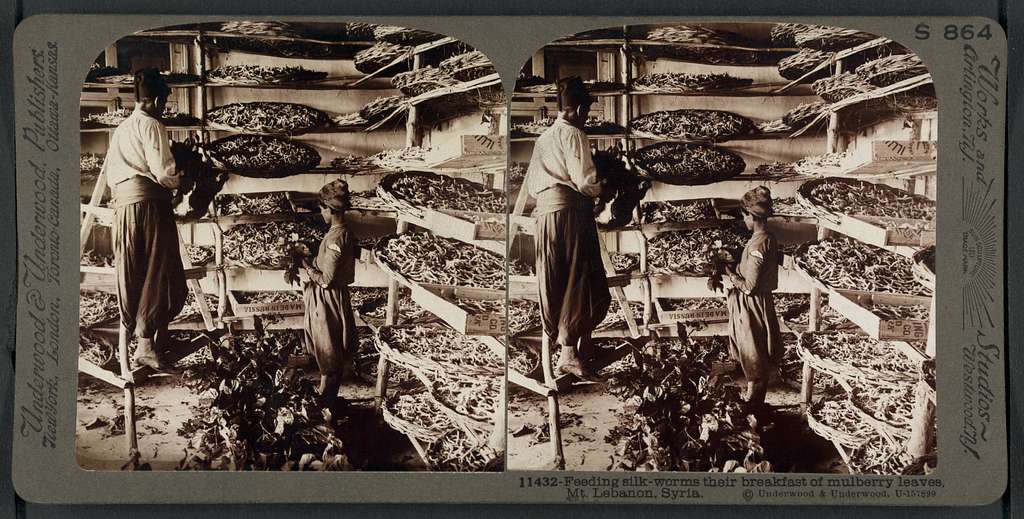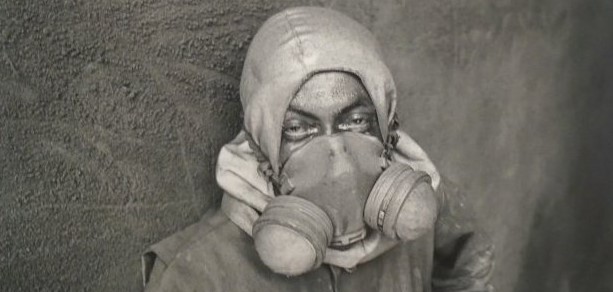Anatomy of an artifact
“Feeding silk-worms their breakfast of mulberry leaves, Mt. Lebanon, Syria” This photograph from Underwood and Underwood publishers is actually a stereograph, what some consider the original 3-D image. This stereograph depicts a silk worm farmer and his assistant feeding silk worms mulberry leaves before their harvest. Silk worm harvesting and textile production represented strong industry in the 19th century, around the start of stereograph printing. Don’t worry if you can’t get the full effect here. You need a stereoscope to view the image properly! A crisp and beautiful image, this stereograph is an exciting find for the Project. Most stereographs are associated with the American civil war, yet another reason that this image is a great primary source. Here’s what the American Antiquarian Society had to say about these images (emphasis my own):
The stereograph, otherwise known as the stereogram, stereoptican, or stereo view, was the nineteenth-century predecessor of the Polaroid, with an imaginative flair. Placed on cardboard were two almost identical photographs, side by side, to be viewed with a stereoscope. When viewed through a stereoscope, the photograph appeared three-dimensional, an awe-inspiring illusion for anyone during that time. The author Oliver Wendell Holmes, who invented an affordable stereo viewer for the American market, wrote in the Atlantic Monthly of June 1859 that ‘the first effect of looking at a good photograph through the stereoscope is a surprise such as no painting ever produced. The mind feels its way into the very depths of the picture. The scraggy branches of a tree in the foreground run out at us as if they would scratch our eyes out. The elbow of a figure stands forth as to make us almost uncomfortable.’
The printers of this stereoscope, Elmer and Burt Underwood, founded Underwood and Underwood in 1880 in Ottawa, Canada. Once stereographs became popular, they moved their business to New York City. Here is what the Kansas Historical Society says about them (emphasis my own):
The first group of photographs showed the Graeco-Turkish war and were taken by Bert Underwood while at the front with the Greeks. By 1901, production of stereoscopic photographs at Underwood and Underwood reached 25,000 a day while annual sales of stereoscopes attained a level of 300,000.
Bert’s travels may have taken him to Mt. Lebanon, or they may have had a freelance news photographer capture the image seen above. The Underwood brothers later became involved in aerial photography and left stereographs to become obsolete. Lucky for us, cultural institutions understand their historical value and make images available online! For those of you interested in stereograph images, here are a few more depicting various scenes.
Images above courtesy of Prints and Photographs Division at Library of Congress. You can check out their online stereograph collection here.
- Categories:



